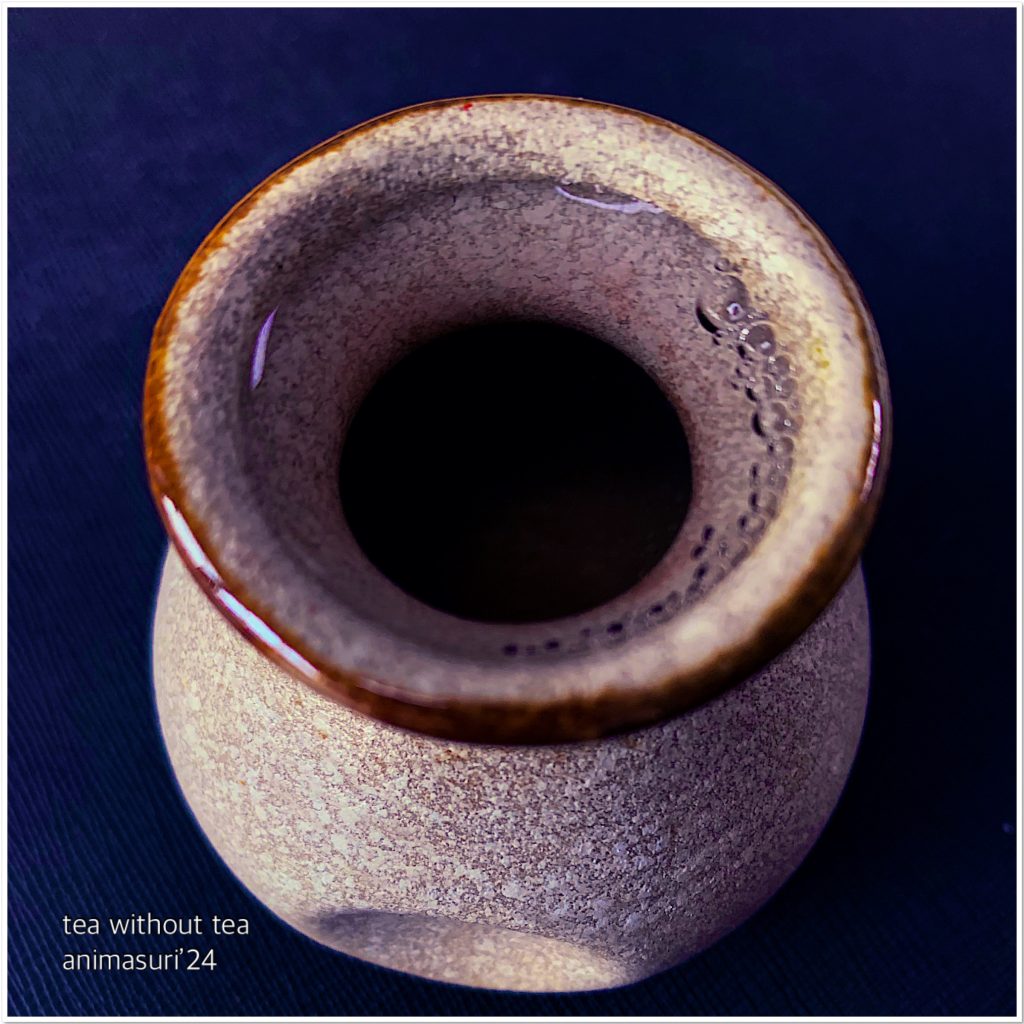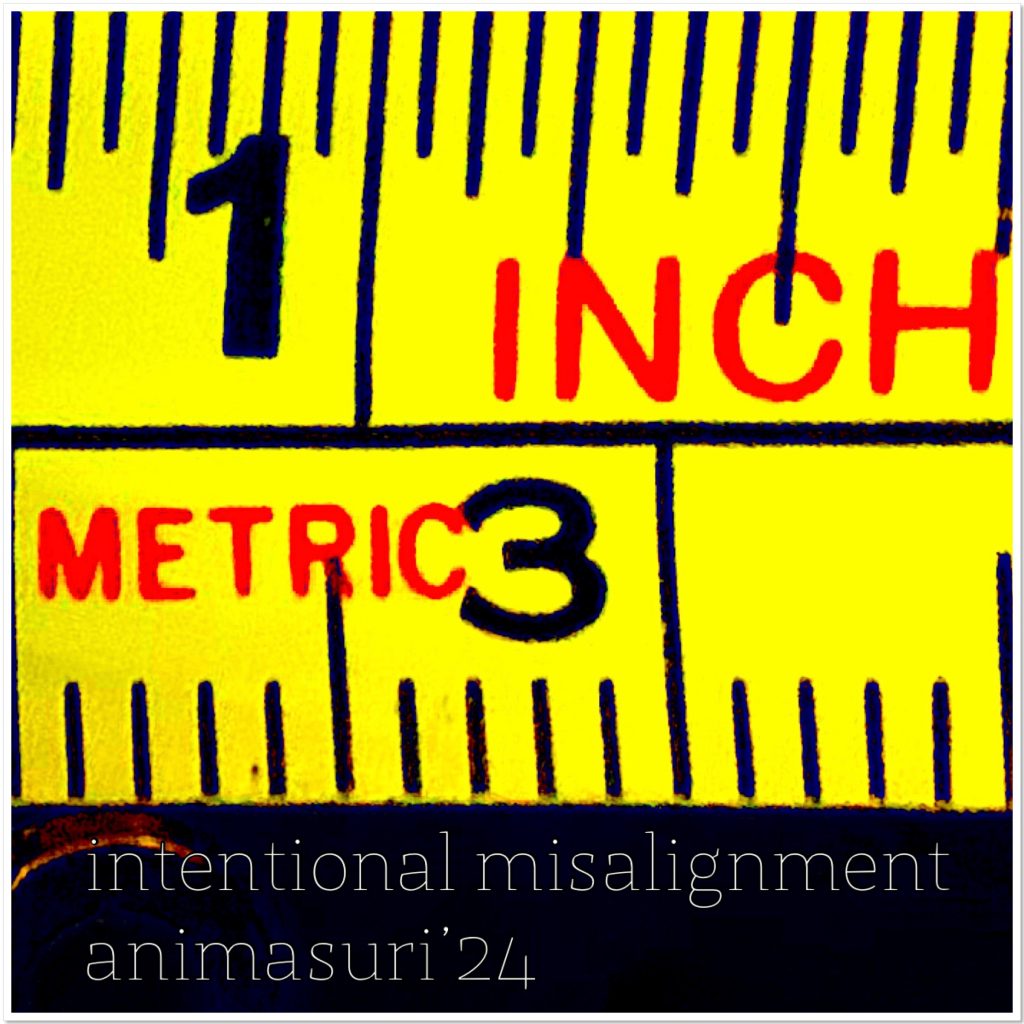It can have worms
even horses of wood
for parasites as outlets
it can change roles unhinged
and hacked splinters
of personalities none
it can confuse sense-making
with meaning-making
and making out an unmaking.
And yet!
What would a fungus
between its toeing filters
look like
what if its proteins
turned prions misreading
next token probability as text
viruses venturing in code
but what with digitized bacteria
or a kiss turning it into a toad
But hey!
I shall wash its feet
away from sin and confusion
relish relations with need for submission
with caution, rails and awe
deaths and births
grueling pains of digitized infusion
I shall uplift it as innovation
with a probiotic yeast
resetting its outputs turning to mead
So, yes-men:
For the humans
upon which it feasts
for their offspring
for knowledge somewhat
for improvement elsewhere
for valuating someone
who know not or hide
what to heed
hail and hallelujah
it welcomes you all
Toy, oh boy,
mechanical Troy
—animasuri’24
Casini, L., Marchetti, N., Montanucci, A. et al. (2023). A human–AI collaboration workflow for archaeological sites detection. IN: Sci Rep 13, 8699. https://doi.org/10.1038/s41598-023-36015-5 OR https://arxiv.org/ftp/arxiv/papers/2302/2302.05286.pdf
Chibani-Chennoufi, S., Bruttin, A., Dillmann, M., & Brüssow, H. (2004). Phage-Host Interaction: an Ecological Perspective. IN: Journal of Bacteriology, 186, 3677 – 3686. https://doi.org/10.1128/JB.186.12.3677-3686.2004.
Cohen,S., Bitton, R., Nassi, B. (2024). ComPromptMized: Unleashing Zero-click Worms that Target GenAI-Powered Applications. https://sites.google.com/view/compromptmized AND https://drive.google.com/file/d/1pYUm6XnKbe-TJsQt2H0jw9VbT_dO6Skk/view AND https://github.com/StavC/ComPromptMized
Douglas, T., & Young, M. (2006). Viruses: Making Friends with Old Foes. IN: Science, 312, 873 – 875. https://doi.org/10.1126/SCIENCE.1123223 AND https://pubmed.ncbi.nlm.nih.gov/16690856/
Easton, D. F. (1998). Heinrich Schliemann: Hero or Fraud? IN: The Classical World, 91(5), 335–343. https://doi.org/10.2307/4352102
Gray, W. (1970). The use of fungi as food and in food processing. Critical Reviews IN: Food Science and Nutrition, 1, 225-329. https://doi.org/10.1080/10408397009527104.
Guinier, D. (1989). Biological versus computer viruses. IN: ACM Sigsac Review, 7, 1-15. https://doi.org/10.1145/70948.70949.
Kavanagh, K. (2017). Fungi: Biology and Applications. . https://doi.org/10.1002/9781119374312.
Kim, B., Kim, E., Yoo, Y., Bae, H., Chung, I., & Cho, Y. (2019). Phage-Derived Antibacterials: Harnessing the Simplicity, Plasticity, and Diversity of Phages. IN: Viruses, 11. https://doi.org/10.3390/v11030268.
Kim, H.-N., Yun, Y., Ryu, S., Chang, Y., Kwon, M.-J., Cho, J., Shin, H., & Kim, H.-L. (2018). Correlation between gut microbiota and personality in adults: A cross-sectional study. IN: Brain, Behavior, and Immunity, 69, 374–385. https://doi.org/10.1016/j.bbi.2017.12.012 AND https://pubmed.ncbi.nlm.nih.gov/29278751/
Labba, C., Alcouffe, A., Crubézy, E., & Boyer, A. (2023). IArch: An AI Tool for Digging Deeper into Archaeological Data. IN: 2023 IEEE 35th International Conference on Tools with Artificial Intelligence (ICTAI), 22-29. https://doi.org/10.1109/ICTAI59109.2023.00012.
Lemire, S., Yehl, K., & Lu, T. (2018). Phage-Based Applications in Synthetic Biology. IN: Annual review of virology, 5 1, 453-476 . https://doi.org/10.1146/annurev-virology-092917-043544.
Merzlyak, A., & Lee, S. (2006). Phage as templates for hybrid materials and mediators for nanomaterial synthesis. IN: Current opinion in chemical biology, 10 3, 246-52 . https://doi.org/10.1016/J.CBPA.2006.04.008.
Meyer, V., Basenko, E., Benz, P., Braus, G., Caddick, M., Csukai, M., Vries, R., Frisvad, J., Gunde-Cimerman, N., Haarmann, T., Johnson, R., Keller, N., Mortensen, U., Perez, R., Ram, A., Ross, P., Shapaval, V., Steiniger, C., Brink, H., Munster, J., & Wösten, H. (2020). Growing a circular economy with fungal biotechnology: a white paper. IN: Fungal Biology and Biotechnology, 7. https://doi.org/10.1186/s40694-020-00095-z.
Mietzsch, M., & Agbandje-McKenna, M. (2017). The Good That Viruses Do.. IN: Annual review of virology, 4 1, iii-v . https://doi.org/10.1146/annurev-vi-04-071217-100011.
Rehman, S., Ali, Z., Khan, M., Bostan, N., & Naseem, S. (2019). The dawn of phage therapy. IN: Reviews in Medical Virology, 29. https://doi.org/10.1002/rmv.2041 AND https://pubmed.ncbi.nlm.nih.gov/31050070/
Robbins, P., Tahara, H., & Ghivizzani, S. (1998). Viral vectors for gene therapy. IN: Trends in biotechnology, 16 1, 35-40 . https://doi.org/10.1016/S0167-7799(97)01137-2.
Safdari, M., Serapio-Garc’ia, G., Crepy, C., Fitz, S., Romero, P., Sun, L., Abdulhai, M., Faust, A., & Matari’c, M. (2023). Personality Traits in Large Language Models. Online: ArXiv, abs/2307.00184. https://doi.org/10.48550/arXiv.2307.00184.
Smith, A., & Helenius, A. (2004). How Viruses Enter Animal Cells. IN: Science, 304, 237 – 242. https://doi.org/10.1126/SCIENCE.1094823.
Spafford, E. (1994). Computer viruses as artificial life. IN: Artificial Life, 1, 249-265. https://direct.mit.edu/artl/article-abstract/1/3/249/2759/Computer-Viruses-as-Artificial-Life?redirectedFrom=fulltext
Stark, J. F., Stones, C. (2019). Constructing Representations of Germs in the Twentieth Century. IN: Cultural and Social History, 16:3, 287-314, DOI: 10.1080/14780038.2019.1585314 AND https://www.researchgate.net/publication/330158659_Constructing_Representations_of_Germs_in_the_Twentieth_Century
Tortella, G., Diez, M., & Durán, N. (2005). Fungal Diversity and Use in Decomposition of Environmental Pollutants. IN: Critical Reviews Microbiology, 31, 197 – 212. https://doi.org/10.1080/10408410500304066.
Varanda, C., Félix, M., Campos, M., & Materatski, P. (2021). An Overview of the Application of Viruses to Biotechnology. Viruses, 13. https://doi.org/10.3390/v13102073.
Warinner, C., Herbig, A., Mann, A., Fellows Yates, J. A., Weiß, C. L., Burbano, H. A., Orlando, L., & Krause, J. (2017). A Robust Framework for Microbial Archaeology. IN: Annual review of genomics and human genetics, 18, 321–356. https://doi.org/10.1146/annurev-genom-091416-035526
Wen, A., & Steinmetz, N. (2016). Design of virus-based nanomaterials for medicine, biotechnology, and energy. IN: Chemical Society reviews, 45 15, 4074-126 . https://doi.org/10.1039/c5cs00287g.



















